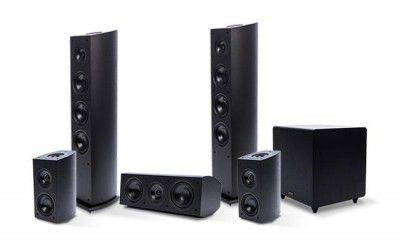ZOOM H5 - Tough & Durable
The benefits to this H5 are:
Very small form factor. Hand held in the palm of your hand.
Much better sound floor than the H4N.
Needs only two AA batteries. Unfortunately doesn't accept the new high capacity batteries
Modular mics that are pretty damn good
Gain control without zippers
Real 4 channel XLR recorder/mixer with the optional plug in module
modular shotgun is actually pretty good!
Sound quality overall is pretty good! Definitely better than the 4N
If you need a recorder for both video shoots, and live concert situations, this is probably the best thing going without carrying a bunch of mics and a unit like the Tascam DR-60 or the Marantz PMD 661. A really good all around recorder. For the one recorder I'll carry when I need to do the job, it will be the H5.
For live recordings where I'm close to home, I'll bring the Marantz with it's better pre amps. For overall use on video shoots, I'll bring the H5n. For travel, it's a no brainer, the H5n. For live field recordings, I'll plug the Marantz into the board, and leave it be, attach the H5 to the video camera and do a dual recording with -12dB into the recorder, and then send it out to the camera. Will cover all bases that way. If, while shooting a concert, I get a chance to do an interview, will plug in a lav to the H5, and continue to spool out audio to the Marantz off the board while taping the interview on the H5. This will give me full coverage. Then when playing music with folks, can just set the H5 on a table top tripod and run it. Sort of a swiss army knife without tying up my cell phone recorder.
Both the Marantz and the H5 are excellent performers with a slight edge to the Marantz on sound quality. If you want the best quality, then go with the Marantz or a better quality Tascam, like the 680 or just go buy a SD. They are the best quality sound and build. But for those of us in small outfits with a lack of audio engineering in the field, a H5 will not be a bad buy.
The Tascam DR-60 is good, but you have to bring a mic, as it doesn't have one on the first generation units. But for what it does it does it well.
Basic operation is straightforward – you turn it on, select which inputs you want to record, set the level and press record, all of which is done using the front panel controls. The level meters start working as soon as you select the inputs and the protected volume controls make it easy to set the levels and get going. The screen is compact but uncluttered with all the information you need readily available, such as available recording time, battery status, file name, level meters (from -48dB to 0) and the chosen recording format (which defaults to 16-bit, 44.1kHz wav files). They’ve done away with the multi-track record mode and the effects unit, which, when used together, made the H4N a powerful multi-track recorder with various amp models and effects. My initial reaction is that this is a pity, but on reflection it’s sensible as very few people utilised this functionality.
You have a choice of two common file formats – MP3 and Wav. Wav files can be 16 or 24-bit with sampling rates of 44.1, 48 or 96kHz, although 96kHz is only available in stereo recording mode, as are MP3 files (which allow bit rates from 48k to 320kbps). Wav files are automatically time stamped and are thus Broadcast Wave Format (BWF) compliant. The H5 utilises SD and SDHC cards for storage and supports anything up to 32 gigabytes. The included 2GB card can store about 14 hours of stereo MP3s at 320kbps, three hours of stereo 16-bit/44.1kHz or an hour of stereo 24-bit/96kHz Wavs.
The pre-record function, when enabled, is continuously recording such that it can capture the two seconds before you press the record button, as well as an auto record function that can be set to record when the volume exceeds a user-defined level (and stop when it drops below a set level).
And then there’s the potentially life-saving Backup-Record feature, which automatically records a duplicate set of stereo tracks that are 12dB lower than the original pair – although this only works when recording stereo Wav files at 44.1 or 48kHz.
In operation the recordings are clean and clear. The default X/Y microphone capsule includes rugged rubber shock mounts, which help isolate handling noise and the X/Y configuration enables the capturing of a detailed stereo image while ensuring centre sources are clear and well defined; it can also handle sound levels up to 140dB SPL.
The line inputs use the same high-quality preamp as the H6, and support professional line level input (i.e. +4dBu), which is an improvement on the H4N, whose balanced input was configured for -10dBV operation, which often meant you had to pad the output from professional gear (such as mixing desks) so as to not overload the inputs.
So overall it’s a very capable and straightforward portable recorder, equally comfortable perched on a mixing desk, in the palm of your hand or sitting on top of a DSLR camera (via the optional hot shoe mount adapter). The interchangeable capsules provide new levels of versatility and flexibility and the lengthy battery life make the H5 a very worthy successor to the much-loved H4N and a powerful handheld recorder in it’s own right.
- Roger Walker
19 Oct 2015



